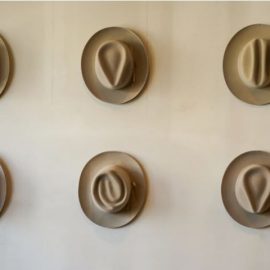

This article is an excerpt from the Shortform book guide to "The Sun and Her Flowers" by Rupi Kaur. Shortform has the world's best summaries and analyses of books you should be reading.
Like this article? Sign up for a free trial here.
Looking for an analysis of The Sun and Her Flowers? What are the key takeaways from Rupi Kaur’s poems?
In Rupi Kaur’s book of poems, The Sun and Her Flowers, she explores feelings of loss, emptiness, insecurity, and growth. By analyzing Kaur’s poems for these themes, it’s easier to understand Kaur’s commentary on these larger social issues.
Read on for our analysis of The Sun and Her Flowers, based on the themes in Kaur’s poems.
Analyzing The Sun and Her Flowers
In our analysis of The Sun and Her Flowers, we’ll explore poet and visual artist Rupi Kaur’s inner emotional self, her relationships, her experiences with trauma and insecurity, and its effect on her relationships. Through her style of minimalist drawings and poems, she connects things in her personal life to larger social issues: Kaur’s relationship with her mother connects to the struggles of immigrants, refugees, and women of color living in misogynistic societies. A new healthy romantic partnership connects to the joy and difficulty of healing and learning self-love.
In our article, we’ll analyze The Sun and Her Flowers to explain the main themes of Kaur’s poetry and how they express both her own biography and broader social themes of love, body image, and finding a sense of belonging.
1: Redefining Love
Kaur realized that she’d been looking at love in the wrong way. In The Sun and Her Flowers, Kaur uses poetry to analyze why her desperate search for external sources of love (like other people) went wrong, keeping her stuck in an abusive relationship. Kaur recognized that she had to learn to love herself—otherwise, she’d follow the same pattern of desperately desiring approval and becoming dependent on a partner. Kaur started redefining love by choosing herself over her partner and staying away from him.
(Shortform note: While Kaur talks about self-love in terms of appreciating and caring for herself, Tara Brach (Radical Acceptance) suggests that there’s a simpler first step for developing self-love: accepting your emotions in a given moment without judging yourself harshly. This strategy means recognizing if you’re feeling upset, did something wrong, or are in a tough situation but not turning that observation into self-criticism—avoiding phrases like “I shouldn’t feel this way,” “Why am I so stupid?” or, “I’m so bad at everything.” Brach explains that this kind of acceptance helps make it easier to develop self-love, self-esteem, and self-care.)
2: Negative Body Image
Some of Kaur’s empty feelings and longing to feel love come from her negative body image. She often feels like her physical appearance is inadequate, or that she’s lacking the traits of a “beautiful” woman—thin eyebrows, little to no body hair, an hourglass figure, and so on. The Sun and Her Flowers analyzes how this is a particular challenge for a woman of color living in the West, which she says bases beauty standards on white women.
Kaur recognizes that these aren’t objective standards of beauty and that they’re created by her society, but she still can’t help but judge herself by them. Kaur positions her negative body image—and her subsequent need to feel attractive—as one of the root causes of her anxiety, depression, and feelings of emptiness.
3: Feeling Belonging
Despite the challenges she faced and the pain and emptiness they brought her, Kaur ends The Sun and Her Flowers on a positive, hopeful note. In the last three sections of the book (“Rooting”, “Rising”, and “Blooming”), she describes feeling a sense of belonging in her family and romantic life. Though challenges remain, Kaur knows she has the strength to face them and that the people she loves will help her along the way.
In particular, The Sun and Her Flowers analyzes two places where Kaur finds meaning, hope, and a sense of belonging:
- Her familial and cultural background
- Her new relationship
Kaur talks about finding a new sense of belonging through family and cultural background. In the “Rooting” section of the book, Kaur shows newfound appreciation for her Indian heritage and her family’s experience emigrating from India to Canada. While she appreciates many aspects of her cultural background, Kaur also criticizes certain aspects of South Asian culture as misogynistic.

———End of Preview———
Like what you just read? Read the rest of the world's best book summary and analysis of Rupi Kaur's "The Sun and Her Flowers" at Shortform.
Here's what you'll find in our full The Sun and Her Flowers summary:
- Explanations and context to better understand Rupi Kaur's poems
- A look into the recurring themes of Kaur's poetry
- What Kaur's poetry can teach us about society and ourselves






